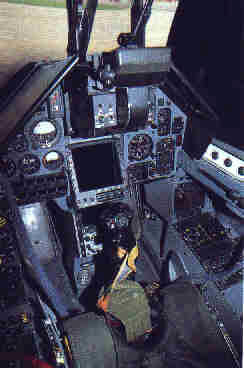Strap a jet on your back and have fun...
The cockpit is not the biggest in itīs class but it is comfortable. The controls are right there where you want them.
The first generation Mirage 2000 didnīt have real Hands ON Throttle And Stick (HOTAS) controls -HOTAS-Lite would be a more accurate description. The throttle in particular bears no similarity to that fitted to the Dash 5, which is true
HOTAS. The early throttle lever had only a few switches that allowed the radar mode to be selected and the radar antennae to be slewed. The joystick is centrally mounted. The later 2000C-S4 and -S5 aircraft did indeed receive a real HOTAS
suite.
The early 2000C had the RDM radar installed. The AdlA
originally specified the Air Intercept optimised RDI but delays in itīs development led to the RDM being installed as a stopgap measure. This was most unfortunate. Not only was the RDM not the radar that the AdlA wanted, it was also
underperforming by a considerable margin. The first 37 aircraft delivered to the AdlA were fitted with RDM. Later planes did then receive the definitive RDI radar.
The pilot sits in a licence-built Martin Baker F10 Q ejector
seat. The instrument panel is dominated by a slender VE130 Head Up Display (HUD) with the VMC 180 radar screen located centrally somewhat below it. To the lower left is a stores management panel. Above the stores management
panel are the navigation instruments and altimeter. The right half of the instrument panel houses the engine and systems displays. Located on the left side of the cockpit, just ahead of
the throttle are controls for the communications equipment including the Have Quick secure radio. The above description is by and large applicable to the strike optimised 2000N and D models.
The newer Dash 5 variant has a radically revised instrument panel.![]()